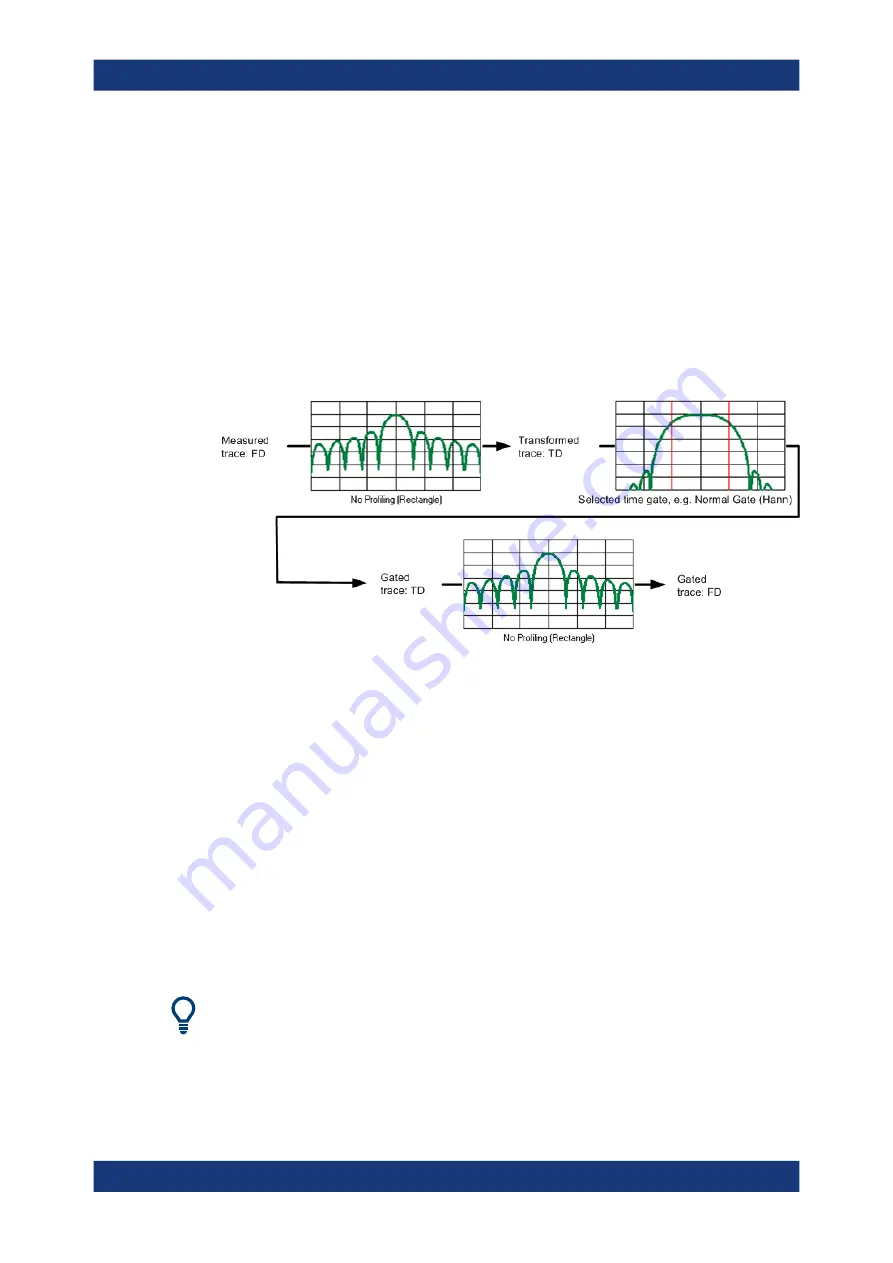
VNA concepts and features
R&S
®
ZNL/ZNLE
300
User Manual 1178.5966.02 ─ 19
Time-gated frequency domain trace
The trace in the frequency domain depends on the state of the "Time Gate":
●
If the gate is disabled, the frequency domain (FD) trace corresponds to the mea-
sured sweep results before the time-domain transformation.
●
If the gate is enabled, the displayed frequency domain trace is calculated from the
time domain (TD) trace which is gated and transformed back into the frequency
domain.
The analyzer uses fixed "No Profiling (Rectangle)" window settings to transform the
measured trace into time domain. The TD trace is gated using the selected time gate.
The gated trace is transformed back into frequency domain using a "No Profiling (Rect-
angle)" window.
The shape, width and position of the time gate affect the gated frequency domain
trace. The window type selection in the "Define Transform" dialog is ignored. The
selected window is used again when the TD trace is displayed ("Time Domain: On").
The rectangular "No Profiling (Rectangle)" windows minimize numerical inaccuracies
near the boundaries of the measured frequency span. In the limit where the effect of
the time gate vanishes (e.g. a gate of type "Notch" and a very small width), the time
gated trace is equal to the original measured trace.
9.7.2
Distance-to-fault measurements
Option R&S
ZNL-K3
With option K3 "Distance-to-Fault", the R&S
ZNL/ZNLE can locate faults and disconti-
nuities on cables and transmission lines.
This option is also available for the R&S
ZNLE.
Faults produce peaks on the impulse response (in the time domain) that is calculated
from the measured reflection S-parameter trace via inverse Fourier transformation. The
Optional extensions and accessories
















































